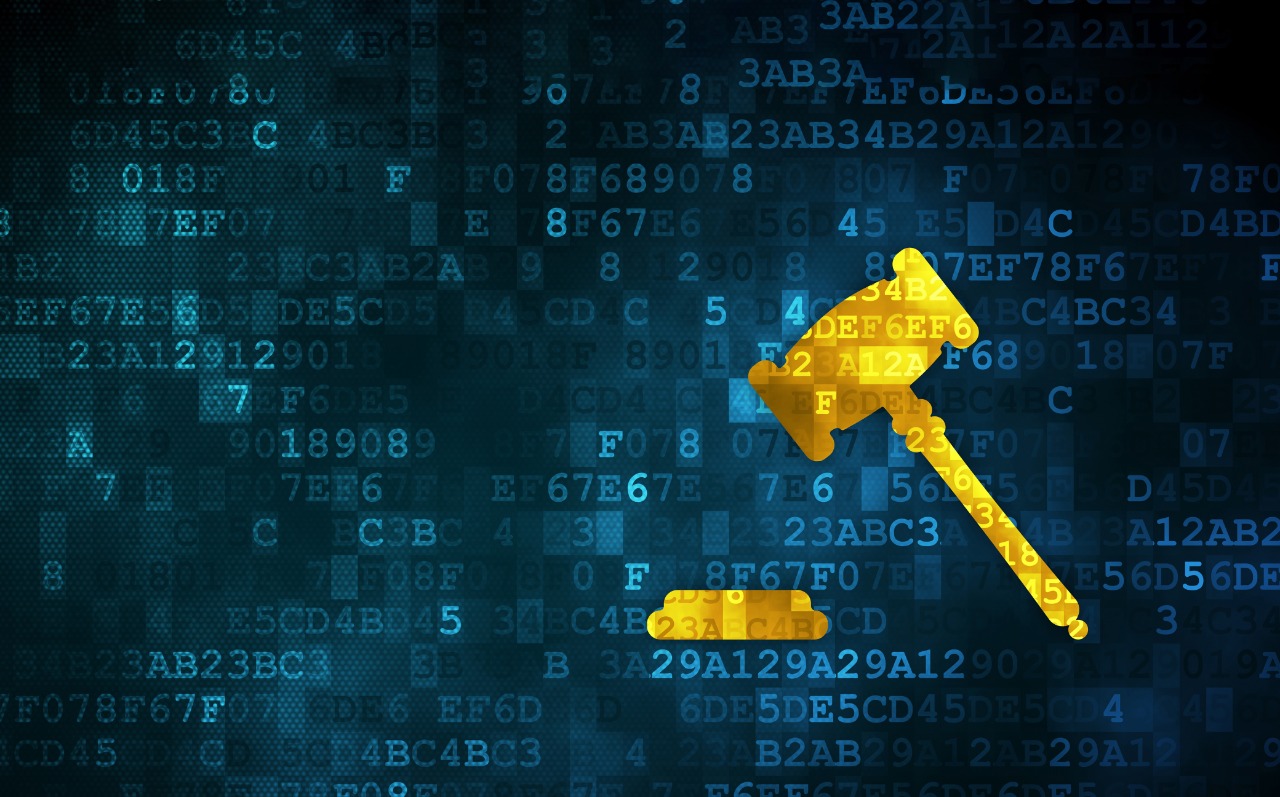The digital age, while offering unprecedented opportunities for connectivity, innovation, and economic growth, has simultaneously opened new frontiers for illicit activities. Cybercrime, once a nascent threat, has evolved into a pervasive and sophisticated global menace, impacting individuals, corporations, critical infrastructure, and even nation-states. From ransomware attacks paralyzing essential services to massive data breaches compromising personal information, the economic and societal costs of cybercrime are staggering, running into trillions of dollars annually. In response to this escalating threat, governments worldwide are intensifying their efforts to combat digital illicit activities, leading to a significant and ongoing tightening of cybercrime laws. This article provides an in-depth exploration of this global legal shift, examining the driving forces behind stricter regulations, the key areas of legislative focus, the challenges of cross-border enforcement, and the future trajectory of international cooperation in the fight against cybercrime.
Why Cybercrime Laws Are Tightening
The increased focus on robust cybercrime legislation is a direct response to the alarming growth and evolving nature of digital threats. Several critical factors contribute to this global legislative tightening.
A. Economic Devastation and Financial Loss
Cybercrime is no longer merely an annoyance; it is a significant drain on the global economy. Ransomware attacks, intellectual property theft, business email compromise (BEC) scams, and financial fraud collectively cause billions, if not trillions, of dollars in losses annually. These financial impacts ripple through industries, affecting businesses of all sizes, consumers, and national economies. Governments recognize that robust laws are essential to protect economic stability and foster trust in the digital marketplace.
B. Threats to Critical Infrastructure and National Security
Modern societies rely heavily on interconnected digital systems for essential services, including energy grids, water supply, transportation, healthcare, and financial markets. Cyberattacks targeting this critical infrastructure can have catastrophic consequences, leading to widespread disruption, loss of life, and national security threats. State-sponsored hacking groups and cyberterrorists pose increasingly sophisticated risks, compelling nations to enact stricter laws to deter and prosecute such attacks.
C. Ransomware Epidemic and Extortion
The proliferation of ransomware, which encrypts data and demands payment for its release, has become a particularly virulent form of cybercrime. Hospitals, schools, and government agencies have fallen victim, often facing immense pressure to pay ransoms to restore vital services. The severity and frequency of these attacks have spurred governments to enact laws that not only target the perpetrators but also regulate ransom payments and encourage better cybersecurity hygiene.
D. Data Breaches and Privacy Erosion
Massive data breaches, exposing sensitive personal information, financial details, and corporate secrets, have become commonplace. These breaches erode public trust, lead to identity theft, and impose significant costs on affected organizations. The public outcry over privacy violations has driven legislative efforts to mandate better data security practices, breach notifications, and accountability for organizations handling personal data.
E. Sophistication of Cybercriminals and Organized Crime
Cybercriminals are increasingly organized, operating like legitimate businesses with specialized roles (e.g., coders, exploit developers, money launderers, negotiators). They leverage advanced techniques, including artificial intelligence (AI) and machine learning, to enhance their attacks. This growing sophistication demands equally sophisticated legal tools and international cooperation to disrupt their operations.
Key Areas of Legislative Focus in Cybercrime Laws
The tightening of cybercrime laws is evident across several interconnected domains, reflecting a comprehensive approach to tackling digital threats.
A. Enhanced Definitions of Cybercrime Offenses
Many jurisdictions are updating or expanding their criminal codes to specifically define and penalize a wider range of cyber-related offenses. This includes:
- Unauthorized Access (Hacking): Broadening the definition of unauthorized access to computer systems, networks, and data, regardless of the intent of the intruder.
- Malware Distribution: Criminalizing the creation, distribution, and use of malicious software (viruses, worms, ransomware, spyware).
- Data Interference/Sabotage: Penalizing actions that intentionally alter, damage, or destroy computer data or systems.
- Computer-Related Forgery/Fraud: Addressing the use of computers to commit fraud, such as phishing, identity theft, and credit card fraud.
- Cyberstalking and Harassment: Extending traditional harassment laws to cover online conduct, including doxing, online threats, and non-consensual sharing of intimate images.
- Child Sexual Abuse Material (CSAM): Strengthening laws against the production, distribution, and possession of child sexual abuse material online, including specific provisions for AI-generated or digitally altered content.
B. Increased Penalties and Sentencing Guidelines
To serve as a stronger deterrent and reflect the severity of the harm caused, penalties for cybercrime offenses are generally increasing. This includes longer prison sentences, higher fines, and asset forfeiture provisions, particularly for offenses involving critical infrastructure, large-scale data breaches, or repeat offenders. Some jurisdictions are also introducing mandatory minimum sentences for certain severe cybercrimes.
C. Mandatory Reporting and Notification Requirements
A growing trend is the imposition of mandatory reporting requirements for cybersecurity incidents. This includes:
- Data Breach Notification: Laws like GDPR (Europe), CCPA (California), and others mandate that organizations notify affected individuals and regulatory authorities within a specific timeframe following a data breach involving personal information.
- Critical Infrastructure Incident Reporting: Specific sectors (e.g., finance, energy, healthcare) are increasingly required to report cybersecurity incidents to sector-specific regulators or national cybersecurity agencies. This aims to improve situational awareness and enable a faster collective response.
D. Extraterritorial Reach and Jurisdiction
Recognizing the borderless nature of cybercrime, many laws are being drafted with extraterritorial reach. This means that a country’s laws can apply even if the cybercrime originates outside its borders, as long as it affects its citizens, infrastructure, or interests. This approach aims to address the challenge of prosecuting foreign actors, though enforcement remains complex.
E. International Cooperation and Mutual Legal Assistance Treaties (MLATs)
A cornerstone of effective cybercrime enforcement is international cooperation. Laws are being strengthened to facilitate:
- Mutual Legal Assistance Treaties (MLATs): Streamlining the process for countries to request evidence, extradite suspects, and provide other forms of legal assistance in cybercrime investigations.
- Information Sharing: Encouraging and, in some cases, mandating the sharing of cyber threat intelligence among nations, law enforcement agencies, and private sector entities.
- Joint Operations: Participating in and facilitating joint international law enforcement operations to dismantle cybercriminal networks and bring perpetrators to justice.
Challenges in Enforcing Cybercrime Laws Globally

Despite the tightening legal frameworks, enforcing cybercrime laws across borders and against sophisticated adversaries presents significant challenges.
A. Jurisdictional Conflicts and Sovereignty Issues
The very nature of the internet defies traditional geographical boundaries. When a cyberattack spans multiple countries, determining which country has jurisdiction to prosecute and where the evidence should be gathered can lead to complex legal conflicts. National sovereignty concerns often complicate the sharing of data and the execution of foreign legal requests.
B. Attribution Difficulties
Identifying the true perpetrators of cyberattacks (attribution) is notoriously difficult. Cybercriminals use sophisticated techniques to mask their identities, route attacks through multiple compromised systems, and exploit anonymity tools. Law enforcement often faces an uphill battle in gathering sufficient evidence to definitively link an attack to a specific individual or group, especially when state-sponsored actors are involved.
C. Varying Legal Frameworks and Definitions
While efforts toward harmonization are ongoing, significant differences still exist in how countries define cybercrimes, the elements required for prosecution, and the available legal tools. These disparities can create safe havens for cybercriminals and complicate international cooperation, as what is illegal in one country might not be in another.
D. Data Localization and Privacy Laws
Many countries have data localization laws that require certain types of data to be stored within their national borders. Additionally, stringent data privacy regulations can impede the rapid cross-border sharing of information necessary for cybercrime investigations. Balancing privacy rights with the urgent need for law enforcement access to data is a delicate and ongoing legal debate.
E. Resource Imbalances and Capacity Building
Not all nations possess the same level of technological expertise, financial resources, or trained personnel to effectively combat cybercrime. This creates capacity imbalances, where less-developed nations may struggle to implement and enforce sophisticated cybercrime laws, making them potential targets or unwitting hosts for criminal operations. International aid and capacity-building programs are crucial to bridge this gap.
International and Regional Efforts Towards Harmonization
Recognizing the cross-border nature of cybercrime, international and regional bodies are playing an increasingly vital role in promoting legal harmonization and facilitating cooperation.
A. The Budapest Convention on Cybercrime
The Council of Europe’s Convention on Cybercrime (the “Budapest Convention”) is the most comprehensive international treaty on cybercrime. It aims to harmonize national laws, improve investigative powers, and enhance international cooperation. As of 2025, it has been ratified by over 70 countries and is widely regarded as the leading legal framework in this field. Its key provisions cover:
- Substantive Criminal Law: Defining offenses like illegal access, data interference, system interference, misuse of devices, computer-related forgery, and child pornography.
- Procedural Law: Granting powers to law enforcement for search and seizure of computer data, real-time collection of traffic data, and interception of content data.
- International Cooperation: Establishing rules for mutual legal assistance and extradition in cybercrime cases.
B. United Nations Efforts
The UN is increasingly active in addressing cybercrime. The establishment of an Ad Hoc Committee to Elaborate a Comprehensive International Convention on Countering the Use of Information and Communications Technologies for Criminal Purposes reflects a global consensus on the need for a UN-backed treaty. While progress is slow due to geopolitical complexities, a universal treaty could address gaps not covered by the Budapest Convention and involve more diverse states.
C. Regional Initiatives (e.g., EU, ASEAN, African Union)
Regional organizations are also developing their own frameworks to complement international efforts:
- European Union (EU): The EU has several directives (e.g., Directive on Attacks against Information Systems) and regulations (e.g., NIS 2 Directive for cybersecurity of essential entities) that aim to harmonize cybercrime definitions, penalties, and incident reporting across member states. The European Cybercrime Centre (EC3) at Europol facilitates cooperation.
- ASEAN: Southeast Asian nations are enhancing cooperation through initiatives like the ASEAN Cybercrime Strategy and regular meetings of cybersecurity experts to share information and build capacity.
- African Union (AU): The AU Convention on Cyber Security and Personal Data Protection (Malabo Convention) aims to create a harmonized legal framework for cybersecurity and data protection across African states.
D. Bilateral Agreements
Beyond multilateral treaties, many countries are forging bilateral agreements to facilitate cooperation on specific cybercrime investigations, intelligence sharing, and joint operations. These agreements can be more flexible and faster to implement than broader multilateral treaties.
E. Public-Private Partnerships
Governments are increasingly recognizing that they cannot combat cybercrime alone. Strong partnerships with the private sector (e.g., cybersecurity firms, tech companies, financial institutions) are crucial for threat intelligence sharing, incident response, and forensic analysis. Legal frameworks are evolving to facilitate these partnerships while protecting privacy and competition.
The Future Trajectory of Cybercrime Law
The landscape of cybercrime is dynamic, and laws must continue to adapt to emerging threats and technological advancements.
A. AI and Machine Learning in Cybercrime and Enforcement
Artificial intelligence (AI) and machine learning (ML) are dual-use technologies. While they offer immense potential for enhancing cybersecurity defenses (e.g., anomaly detection, threat prediction), cybercriminals are also leveraging AI for more sophisticated attacks (e.g., deepfakes for fraud, AI-powered malware). Future laws will need to address the use of AI in committing crimes and regulate the ethical deployment of AI for law enforcement and cybersecurity.
B. Regulation of Cryptocurrencies and Digital Assets
As cryptocurrencies become more mainstream, laws will continue to tighten around their use, particularly concerning AML/CTF, taxation, and consumer protection. Jurisdictions are exploring central bank digital currencies (CBDCs) which could bring new legal challenges related to privacy, financial stability, and monetary policy.
C. Cyber Warfare and International Law
The application of existing international law (e.g., laws of armed conflict, self-defense) to cyber warfare remains a contentious area. The development of clearer norms of behavior in cyberspace and potentially new international conventions governing cyber warfare will be critical to prevent escalation and maintain global stability.
D. Supply Chain Security Legislation
The increasing focus on supply chain vulnerabilities will likely lead to more stringent legal requirements for organizations to ensure the cybersecurity of their entire supply chain, extending responsibility to vendors, contractors, and third-party service providers.
E. Data Governance and Sovereignty Debates
The tension between data sovereignty (data remaining within national borders) and the global nature of data flows will continue to be a significant legal and policy debate. Future laws might explore new models for data sharing and access that balance national security, economic interests, and individual privacy.
Conclusion
The tightening of cybercrime laws globally is a necessary and ongoing response to an evolving and pervasive threat. While significant progress has been made in harmonizing legal frameworks and fostering international cooperation, the challenges remain substantial. The borderless nature of cyberspace, the sophistication of adversaries, and the constant emergence of new technologies demand continuous adaptation from legal systems.
The battle against cybercrime is a shared responsibility that transcends national boundaries. Only through a sustained, coordinated, and adaptable global legal and operational effort can societies hope to safeguard the promise of the digital age against the escalating tide of cyber threats. The tightening grip of cybercrime laws is not just about punishment; it is about building a more resilient, secure, and trustworthy digital future for all.













